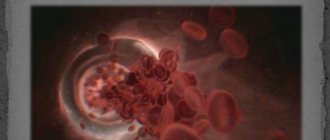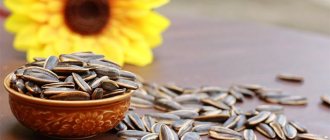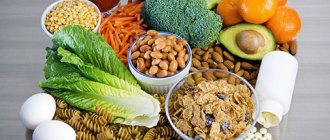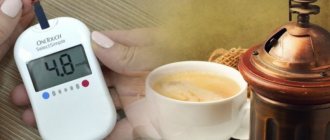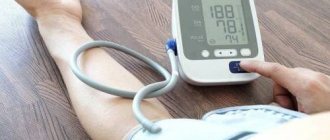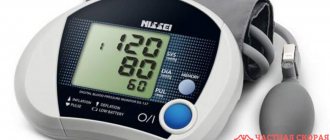Vegetative-vascular dystonia is manifested by functional disorders of various organs and systems. In most cases, they do not require drug correction. You can improve your quality of life by following a diet and eliminating bad habits.
The Yusupov Hospital has created all the conditions for the treatment of patients suffering from vegetative-vascular dystonia:
- the wards are equipped with central ventilation and air conditioning;
- doctors use innovative methods for treating VSD;
- medical staff is attentive to the wishes of patients;
- cooks provide dietary meals.
The diet for VSD is balanced. The menu includes dishes containing sufficient amounts of protein, vitamins, and microelements. Their organoleptic properties and aesthetic appearance are no different from home cooking.
Complex treatment of VSD begins with non-drug methods. The patient is asked to change his lifestyle, stop drinking alcohol, coffee, strong tea, and energy drinks. Rehabilitation specialists provide complex therapy for VSD, aimed at restoring the function of the autonomic nervous system.
Vegetative-vascular dystonia - causes and symptoms
This disease manifests itself differently in each person, not corresponding to the most pronounced manifestation of organ pathology. Manifestations of vegetative-vascular dystonia are divided into two types: vagotonia and sympathicotonia.
Vagotonia
This form of the disease is manifested by major hypochondria. A person's performance decreases and fatigue increases. In addition, sleep disorders and memory impairments are observed. People of this type are often indecisive, apathetic, fearful, and prone to depression. Sensitivity to stuffiness, cold, often a feeling of lack of air and chilliness, vestibular disorders, nausea and other symptoms. Cardiovascular disorders are manifested by bradyarrhythmia, pericardial pain, and decreased blood pressure.
Sympathicotonia
Such people are quick-tempered, temperamental, their mood is changeable, they are often distracted, often absent-minded, and neurotic states are observed. This symptomatology is characterized by a feeling of heartbeat and a feeling of heat. Such people suffer from pale and dry skin, pronounced white dermographism, numbness and paresthesia, poor heat tolerance, and atonic constipation. The heart suffers from tachycardia and high blood pressure.
What can be done if your condition worsens sharply after drinking and smoking?
When patients with VSD experience a severe reaction after drinking alcohol, they need emergency care. First of all, it is necessary to reduce the excitability of the subcortical centers of the ANS through sedatives. Such products are sold at any pharmacy and are available without a prescription. Therefore, the home medicine cabinet of patients with vegetative-vascular dystonia must contain the following medications:
- Valerian or motherwort extract. You can also use tinctures based on motherwort or hawthorn.
- Tranquilizers, for example, Sibazon or Diazepam. Long-term use of this group of medications can cause dependence, so they are available only with a doctor's prescription.
- Agents with a beta-adrenergic blocking effect (Atenolol, Anaprilin).
- Antispasmodics and enterosorbing agents.
Before purchasing any medications, you should consult with your doctor in advance about the rationality of their use in certain situations.
How smoking affects cardiovascular activity
A smoker's heart beats faster (up to 80-90 beats per minute).
Carbon monoxide, which cigarette smoke brings into the body, reduces the amount of oxygen entering organs that are very important for life. Oxygen starvation has a very negative effect on the vital resource of the heart.
Increased blood clotting. Because of this, blood clots may appear in the blood vessels and heart cavity. If the blood clot breaks, and this almost always happens suddenly, the person may experience a myocardial infarction, cerebral stroke, or pulmonary infarction.
The negative effect is also due to the high concentration of nicotine, which affects the decrease in the level of the hormone prostacyclin and damage to cell membranes. A decrease in the level of this hormone can lead to a disease that affects the smoker's heart. It will also accelerate the course of an existing disease.
Cholesterol in the blood increases, and the level of blood lipids, betaliproprotein, also increases. This contributes to the formation of atherosclerotic plaques, which prevent blood flow to the heart. The negative consequences of atherosclerosis are myocardial infarction, ischemic disease and even sudden death.
Alternative to cigarettes and alcohol
Even if desired, it is much more difficult for patients with VSD to get rid of nicotine or alcohol addiction than for other people. But if you gather your strength, it can be done. For example, when fighting smoking, you can try to replace cigarettes with drinks made from natural coffee beans. They also stimulate blood circulation in the brain well and have much less negative effect on the body.
Instead of alcohol, a frequently occurring nervous state can be eliminated with the help of sedative medications, available in pharmacies without prescriptions.
The combination of relaxants and tonic coffee allows you to stabilize the condition of patients with VSD and bring it back to normal. But you should understand that any medications and coffee should be taken only in reasonable amounts without abuse.
The diagnosis of vegetative-vascular dystonia is in no way combined with smoking, and especially with an addiction to alcoholic beverages. Such desires only shorten life expectancy and significantly worsen the condition of patients. But, despite this, many patients find ways to temporarily get rid of the symptoms of this disease and get the desired relief. In order not to ruin your health, it is worth thinking about ways to eliminate the manifestations of VSD that do not cause harm to the body.
Consequences of smoking with VSD (vegetative-vascular dystonia)
One of the most sensitive systems of the body during VSD is the cardiovascular system and the heart. Therefore, VSD and smoking are a dangerous combination.
Spasms
After smoking a cigarette, the heart muscle works faster, blood pressure rises and pulse increases. Small blood vessels under the influence of nicotine undergo a spasm that lasts about half an hour. This means that if you smoke frequently, your blood vessels are in constant spasm, which prevents normal blood flow to tissues and organs. There is a risk of developing myocardial infarction and hypertension.
Ischemia or hypertension
A common symptom of VSD is tachycardia, when it seems as if the heart will “fly out” of the chest. In addition, there is always a risk of coronary and hypertension. It is logical that smoking increases this risk many times over.
The reason for stronger nicotine and alcohol dependence in patients with VSD
It can be noted that the relief is only temporary, rather conditional. However, many of the patients with VSD in a state of constant physical imbalance prefer to experience relief for at least 10-20 minutes than to remain without it at all. However, for them, smoking and drinking alcohol are more dangerous than for a number of other groups, since in the case of VSD, this can shorten the life span not by several years, as in the traditional situation, but by several times.
Is it harmful to drink alcohol with autonomic dysregulation?
Ethyl alcohol destroys brain neurons and disrupts the mechanism for the synthesis of neurotransmitters, which are responsible for transmitting impulses. The autonomic (autonomic) nervous system cannot normally coordinate the work of internal organs. There are malfunctions in the functioning of the digestive, respiratory systems, heart and blood vessels, problems with thermoregulation. In dystonics, intoxication occurs quickly, and the hangover is severe.
The functioning of the autonomic nervous system is equally negatively affected by strong and low-alcohol drinks.
Content:
- Is it harmful to drink alcohol with vegetative-vascular dystonia?
- What changes occur in the body 2.1. Alcohol and hypotonic form of VSD
- VSD and alcohol - possible risks 3.1. Panic attacks 3.2. Hangovers and autonomic dysfunction
The main manifestations of vegetative-vascular dystonia (vegetoneurosis) are migraine, tingling in the heart area, changes in blood pressure, weakness and irritability. Alcohol with VSD aggravates the course of the disease, increases the risk of heart attack, stroke, and hypertensive crisis.
Causes of VSD
Many doctors believe that VSD is a consequence of psycho-emotional stress, when general well-being worsens and internal organs stop working correctly. There are many reasons for the appearance of VSD: long-term depression and constant stressful situations, incorrectly calculated physical and emotional stress, sleep problems, reduced immunity, spinal diseases, and a sedentary lifestyle.
Reviews from doctors indicate that several causes intersecting at the same time are sufficient to initiate the outbreak of the disease, thereby comprehensively disrupting autonomic regulation.
One of the sources of VSD is the presence of bad habits in a person’s life – smoking and alcohol abuse. All people know about the dangers of smoking, but not everyone has information about whether you can smoke if you have VSD.
The relationship between smoking and panic attacks
Anxiety is an unpleasant sensation, during which a person tries to master the situation as quickly as possible and keep it under control. This is a big stopper for ambitious individuals who are constantly in pursuit of results and achieving goals.
Severe stress, anxiety, and regular tension lead to the fact that we do not have time to fully rest, relax and replenish our reserves of strength and energy. Information flows only worsen the situation, because in order to unload, we often go to social networks and instant messengers. As an opportunity for relaxation, a source of additional inspiration, or a moment to unwind, things that are harmful to the health of the body are often used: cigarettes and coffee.
Video lecture
128 ways to overcome panic attacks
Teacher: Olga Butakova
More details
It seems that a break of this kind will provide an opportunity to relax and give additional motivation, but in reality our body receives a portion of harmful substances in the form of nicotine and caffeine, which provoke problems of a physiological and psychological nature. Panic attacks are among the negative consequences that can be experienced by both heavy smokers and those who like to “indulge” in a cigarette or two.
When you decide to work with consciousness and turn to a psychologist for help to get rid of panic attacks, one of the first questions the specialist asks is: “Do you smoke?” An honest answer is necessary to collect anamnesis and make initial assumptions about possible sources of panic. Some patients begin to worry: Is it possible to smoke during attacks? Will they appear if I quit a bad habit? Should we expect other manifestations after quitting cigarettes?
Statistics show that smoking very often provokes a panic attack. If you regularly experience such attacks, the first thing you need to do to get rid of them is to forget about cigarettes. The essence of the problem is not only that harmful substances enter the body, but also that they provoke the activity of neurotransmitters such as adrenaline and glutamate. These substances motivate the so-called “narrowing of consciousness,” which is also characteristic of panic attacks.
Heavy smokers who experience panic attacks do not always understand the cause-and-effect relationships and are able to quickly give up the bad habit. To overcome addiction, and with it attacks of uncontrollable fear, you need to set a clear goal and find an important incentive. As a result, you can not only get rid of panic attacks, but also improve your psychological and physical health.
It is worth remembering that when you smoke a cigarette, you release a dose of nicotine into your body. If a panic attack occurs at this moment, the brain remembers the moment and can subsequently expect it when smoking again. Or vice versa, after a panic you may want to smoke. Neither in the first nor in the second case a beneficial effect is observed. In minimal quantities, nicotine can relax, but in large quantities it causes negative consequences.
Possible risks
Alcohol and VSD of hypertensive and mixed types are incompatible things. When the functions of the nervous system are disrupted, it provokes the development of negative consequences. Patients with vegetative-vascular dystonia quickly develop a harmful addiction.
Consequences:
- tachycardia, arrhythmia;
- a sharp jump in blood pressure, hypertensive crisis;
- stroke;
- heart attack;
- outbursts of aggression;
- kidney and stomach diseases;
- depressive states.
In some concomitant pathologies, drinking alcohol provokes internal bleeding. To reduce the risk of a crisis, alcoholic drinks should be taken with jelly.
This product contains glycine, which improves microcirculation.
Ethanol reacts with drugs prescribed for the treatment of VSD. This leads to the development of pronounced side effects.
Panic attacks
Unreasonable panic attacks are a serious pathological condition, diagnosed in 45–50% of dystonics.
The disease is accompanied by sudden causeless fear and various somatic symptoms. Main manifestations:
- heart rate increases;
- dyspnea;
- compresses the chest;
- increased sweating;
- frequent urination;
- migraine with visual aura;
- muscle tension, numbness of the limbs, tingling in the occipital region;
- dizziness.
With unreasonable panic, concern for life and health arises. During an attack, it is impossible to think rationally, concentrate, or make informed decisions.
An attempt to stop a panic attack with alcohol during vegetative neurosis leads to the development of psychoneurological disorders.
The consequences are prolonged depressive states, isolation, detachment from real life, apathy, suicidal thoughts.
Hangovers and autonomic dysfunction
Often, exacerbation of vegetative neurosis occurs against the background of withdrawal syndrome.
Even if before this the disease was in stable remission. The main manifestations are severe migraine, panic attacks, tachycardia. Due to a significant increase in pressure, you may feel dizzy and faint. The person becomes apathetic or overly excitable. Additionally, there is pain in the abdomen, chest, frequent attacks of nausea and vomiting.
Against the background of a severe hangover, depression develops, panic attacks become regular and intense.
Alcohol is dangerous. Especially with hypertensive and mixed types of disease. Abuse provokes the development of coronary pathology and chronic heart failure.
These diseases lead to disability and death.


